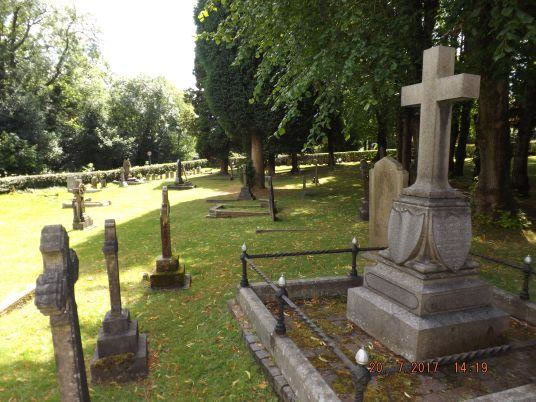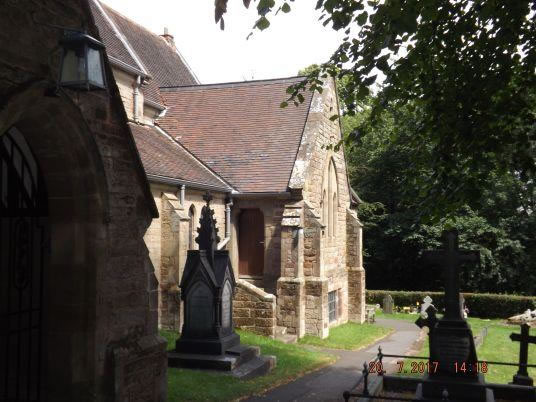Many of us enjoy researching family history but when the sun comes out then we may want to get out in the fresh air and leave our research behind. So what if I told you there was a way of combining both being outdoors, family history, and earning rewards for your time?
Becoming involved in a volunteer project, such as photographing or transcribing headstones for UKIndexer, can not only help to share valuable genealogical information that may otherwise never come to light, but can have the added advantage that it is very rewarding for the volunteer as well. Joining the growing band of people involved in these projects can help you pay for the books, software and online subscriptions that you want while enjoying photographing memorials in the tranquillity of an old churchyard or cemetery.


The value of this project was brought home to me recently when revisiting a municipal cemetery that I had last been in ten years ago. On first sight, one of my ancestors graves had completely disappeared! My notes told me that it was situated next to another family member’s grave but all that could be seen now was a huge thick bush. Even pulling back the branches made no difference, I couldn’t even see the outline of the grave or its headstone! It had been so different back in 2009; what had now become completely absorbed by sturdy branches, dense foliage and sharp brambles, had been openly visible then. The information carved into the stone is now lost to anyone visiting in 2019.
It is not only vegetation that can cause the loss of a headstone and its family history data. As the years pass the legibility of the letters on some soft stone can be weathered to the point of no longer being readable. Many headstones may start to precariously lean over and then those in charge of the burial ground may remove them on health and safety grounds. All these reasons make it essential that as many headstones as possible are photographed now before they disappear.
When the summer has passed, what about becoming involved in transcribing records? By helping to record the headstone information that you read on the images, or the details seen in other records that need to be indexed, you too could participate.
Various projects are available all the time at UKIndexer and they offer a variety of ways to help your fellow genealogists by making searchable the data that you or others have photographed. The volunteers’ valuable input helps to ensure that it is the highest quality information that is published online for family history researchers to search and use, as well as benefiting researchers who may discover a long lost ancestor as a result of your contribution.

Participants who sign up to the scheme can choose to transcribe historical records or photograph headstones. The credits they gain are then available to be spent on products at S&N Genealogy Supplies, or towards an online subscription to TheGenealogist. If this idea appeals to you then you can be based anywhere that you like for carrying out the indexing projects. Transcribers will have access to a special online tool to use that enables them to transcribe from wherever they are. The projects currently available allow volunteers to choose from photographing and transcribing headstones or transcribing poll books and various other historic documents.
Access Over a Billion Records
Try a four-month Diamond subscription and we’ll apply a lifetime discount making it just £44.95 (standard price £64.95). You’ll gain access to all of our exclusive record collections and unique search tools (Along with Censuses, BMDs, Wills and more), providing you with the best resources online to discover your family history story.
We’ll also give you a free 12-month subscription to Discover Your Ancestors online magazine (worth £24.99), so you can read more great Family History research articles like this!
Headstones
One of the projects looking for new volunteers who like to get out and about to photograph in the fresh air, is the recording of headstone images. For people who simply enjoy transcribing historical details from their computers at home, then there is the chance to index the information contained on photos of headstones. Of course you may wish to do both of the stages, or just the one, that’s your choice when you sign up to UKIndexer.
Once you have joined and checked that your local cemetery is not being worked on by another volunteer, then all you would need to do is register your intention to visit the graveyard with your camera and begin photographing the headstones. This headstone project is designed to preserve these fragile records that by their nature are subject to loss over time from weathering and other damage. Some burial grounds are even being closed and cleared to be redeveloped, making it even more necessary that they are recorded before they are lost altogether. The resulting photographs and transcription records make up an important set that is made available on TheGenealogist. With this resource family history researchers are able to see the inscriptions on an ancestor’s grave and an image of the gravestone, even when it’s not possible to visit the graveyards themselves.
The wording carved into the stone can very often be quite revealing. This is especially so when the inscription provides some extra information on the deceased person that is not available elsewhere. Some memorials may divulge intriguing details of an ancestor’s life or disclose the town where they had originally come from. Other headstones can give the names and dates of family members that are buried overseas and yet are commemorated on a close relative’s grave at home.
Getting involved in the UKIndexer headstone project can give you a great sense of helping your fellow family historians by sharing information that may otherwise remain hidden in a churchyard. It’s also a wonderfully peaceful and rewarding way to spend your time.
Historical Documents
Various documents can give clues about our ancestors lives, these include residential directories and professional directories. These appear on the UKIndexer site from time to time for transcribers to help with.
Another project that UKIndexer is currently offering to its volunteers is Geo-Referencing Tithe maps. This is a very interesting process in which you link historic tithe maps onto modern day maps. There is a large variety of previous and possible forthcoming datasets, which include Criminal Records, War Memorials, Census, Electoral Rolls and Poll Books.
If you would like to help complete these various projects and benefit from earning credits or if you would like more information, please take a look at the website to find out more: www.ukindexer.co.uk/ .






